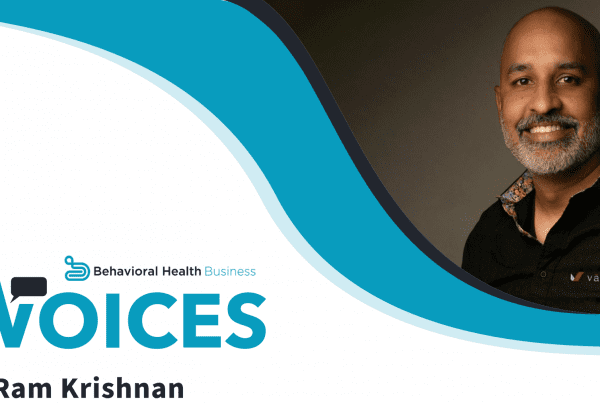Electronic Health Record (EHR) systems – also known as EMR Software – have become indispensable for behavioral healthcare practices. As the EHR market has grown, systems tailored specifically to mental health have been created to meet the unique requirements of this field. Today, efficient EHRs play a major role in improving practice operations, enhancing patient care, and driving growth and scalability.
However, an EHR is only as good as its workflows. To reap the full benefit, your practice must use its features to create efficient processes for daily work.
Five key processes, in particular, can empower growth and scale. These processes form the backbone of an efficient behavioral health workplace, and can tremendously improve the patient and provider experience.
Scheduling Process
Easy scheduling is the base of an efficient workflow in behavioral health practices. Streamlined scheduling makes work easier for office staff and improves patient access by reducing wait times. For clinicians, efficient scheduling means better time management and the ability to see more patients.
Features that improve the scheduling flow might include patient-initiated appointment requests, automated reminders, and waitlist management.
An appointment request feature allows patients to book at their convenience, freeing up staff to simply approve requests rather than spend time on the phone scheduling each patient. A convenient scheduling program should allow all providers and staff to access the same calendar, updated in real-time, and should ideally allow for scheduling across time zones. Once appointments are scheduled, automated reminders reduce no-shows and late cancellations.
Waitlist management ensures that any cancellations are filled quickly so providers can maximize each workday. Some EHRs such as Valant let providers add patients to the waitlist directly from the scheduling feature, keeping the process fast and simple.
Clinical Documentation Process
Accurate and comprehensive clinical documentation is essential for high-quality behavioral health care. It enhances care coordination by ensuring that all team members can access up-to-date patient information, thus affecting patient outcomes. It also supports compliance with regulatory requirements, reducing the risk of legal issues.
Customizable templates are a major factor in the efficiency of a documentation process. Templates for various treatment modalities provide a consistent structure for practitioners, while note-taking features can auto-generate narrative notes to quickly capture vital information mid-session. These notes should be editable so the clinician maintains ultimate control over the content.
When features like templates and note generation are well-utilized, clinicians are able to complete documentation faster and free up more time for patient care.
Strong documentation features include integration with assessments such as the PHQ-9 or GAD-7. This keeps all relevant patient data accessible and well-organized.
Outcome Measures Process
Outcome measures help clinicians track patient progress and evaluate the effectiveness of treatment, driving quality improvement. These measures not only improve communication between clinician and patient, they can contribute to better patient outcomes. To be most effective, however, they must be administered and evaluated on a regular basis. With an efficient workflow, they benefit provider and patient without an increase in workload.
Effective EHR solutions incorporate outcome measures directly into the clinical workflow, making it easy to assign outcome measures and collect the results through the patient portal or other simple means. With regular administration of these measures, providers can track patient progress over time and make data-driven decisions about treatment plans. Ultimately, this enhances the patient experience and demonstrates the effectiveness of care, two things that are critical to supporting long-term growth and scalability.
Billing Process
No behavioral health practice can thrive without strong financial management. The billing lifecycle helps establish healthy cash flow and financial stability.
You need intuitive billing reports and claims management systems to track payments and respond in a timely manner to manage denials. When issues are addressed quickly, revenue loss is minimized.
Accuracy up front can also minimize revenue loss, as it prevents bills from being rejected in the first place. Your billing process should include a component of careful screening for mistakes in claims and documentation.
Financial health is essential for investing in growth opportunities and scaling the practice.
Patient Portal Process
The patient portal is a powerful tool for creating a positive patient experience. An easy-to-use portal with convenient features will enhance patient engagement and communication while making them feel in control of their healthcare.
Patients want to easily communicate with providers, request appointments, access their medical records, and pay bills. A user-friendly patient portal can meet these needs. Some patient portals can even be used to launch telehealth sessions, capture updates for your records, and store payment methods. This central hub for interactions between client and practice keeps your patients engaged, upping the likelihood that they will adhere to treatment plans. In this way, a good patient portal can be a contributing factor in your patients’ mental health outcomes. Good outcomes and a positive experience are major factors that enhance your practice’s reputation and make growth possible.
Patients aren’t the only ones who benefit from a useful portal. When patients are able to carry out some tasks themselves, such as paying bills and requesting appointments, your staff is freed up for other tasks.
Positioned for Future Success
These five EHR process flows—scheduling, clinical documentation, outcome measures, billing, and patient portal—are essential for the growth and scalability of your behavioral health practices. By leveraging these flows, practices can improve operational efficiency, enhance patient care, and achieve financial stability.
By adopting these processes, your practice can position itself for long-term success and growth.
Value Based Care Whitepaper
10 Easy Steps to Work Smarter and Reap Profits in 2024
If you are interested in better patient outcomes, higher reimbursements, and better contracts with payors, this whitepaper is for you.









